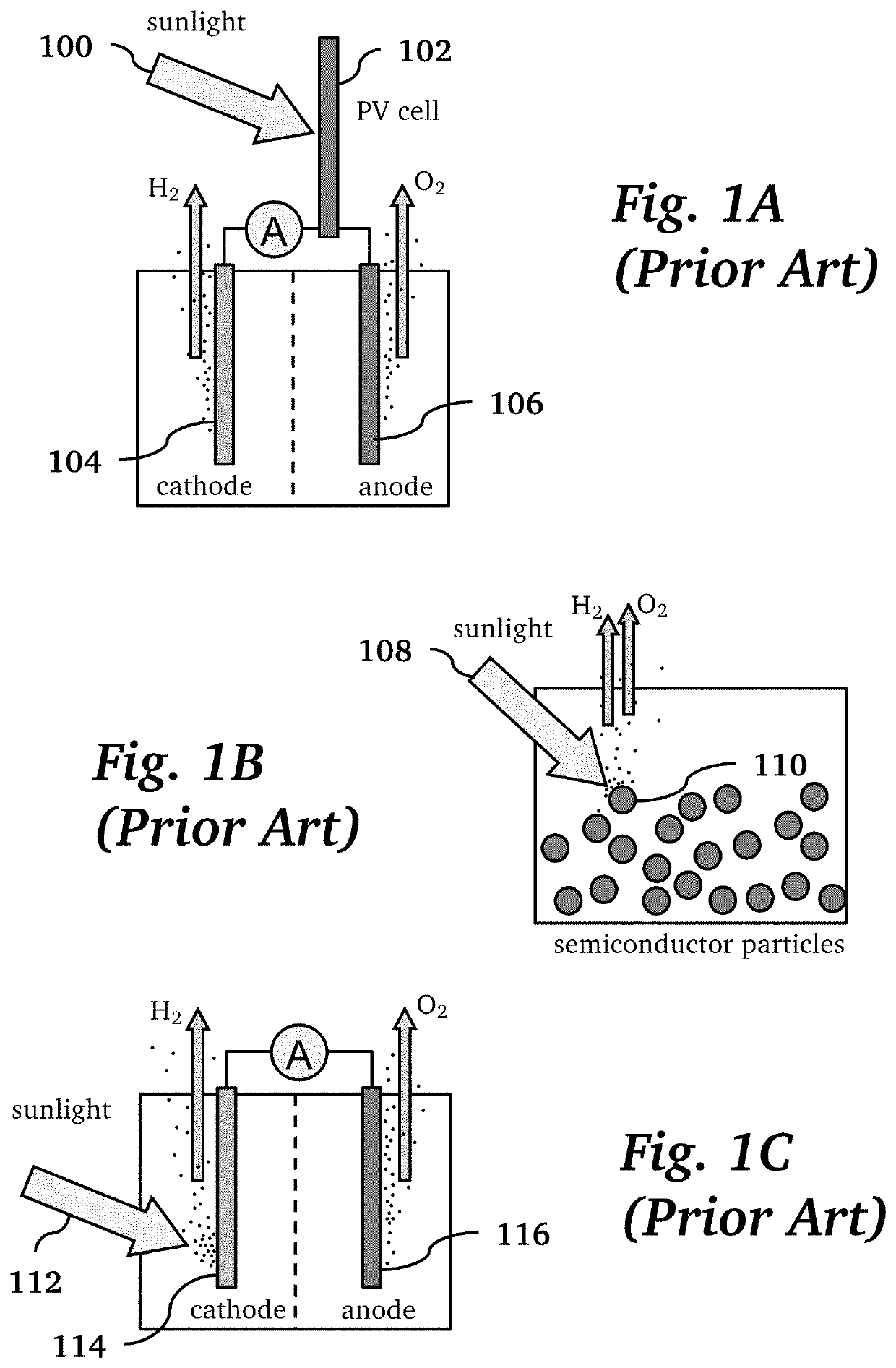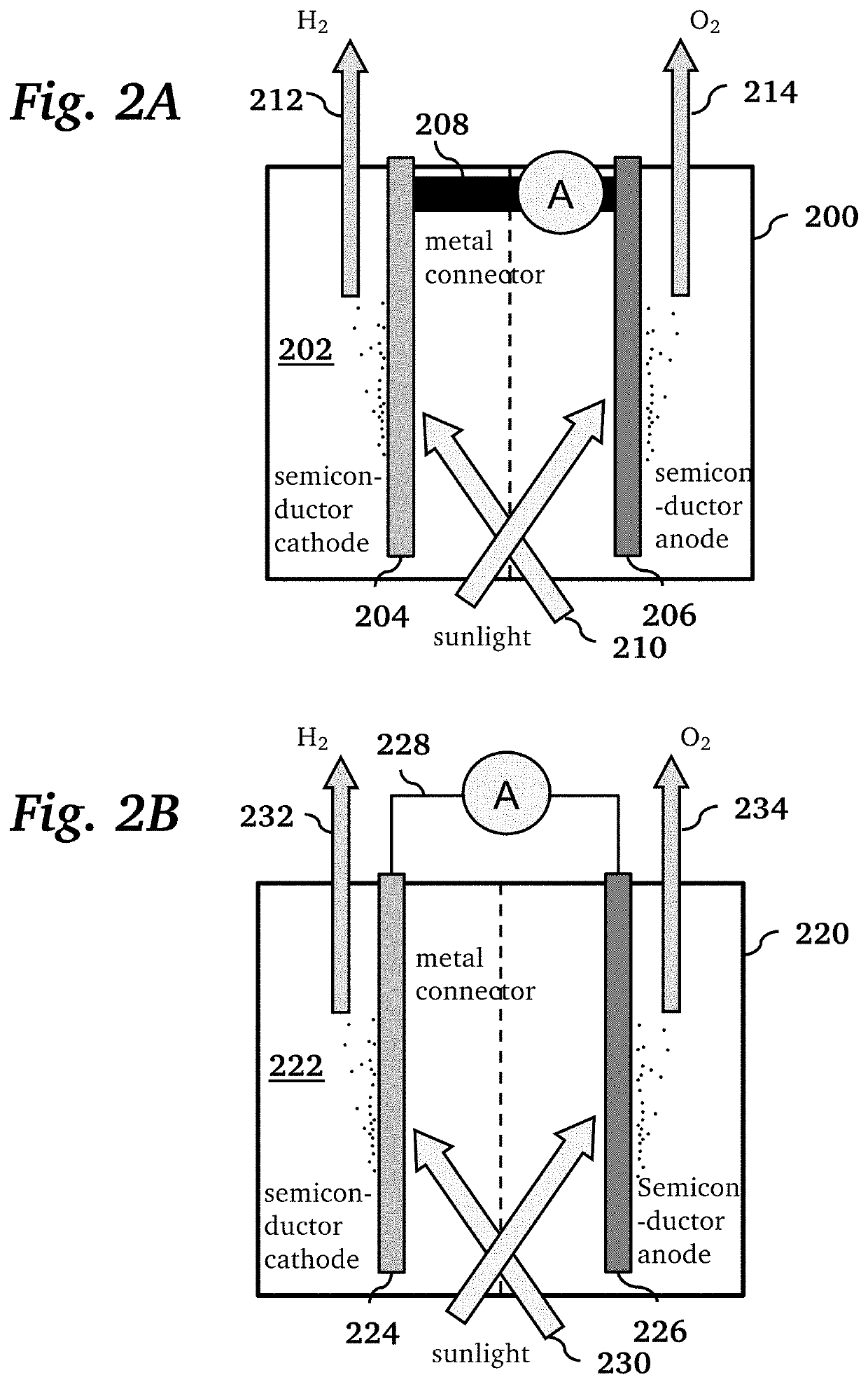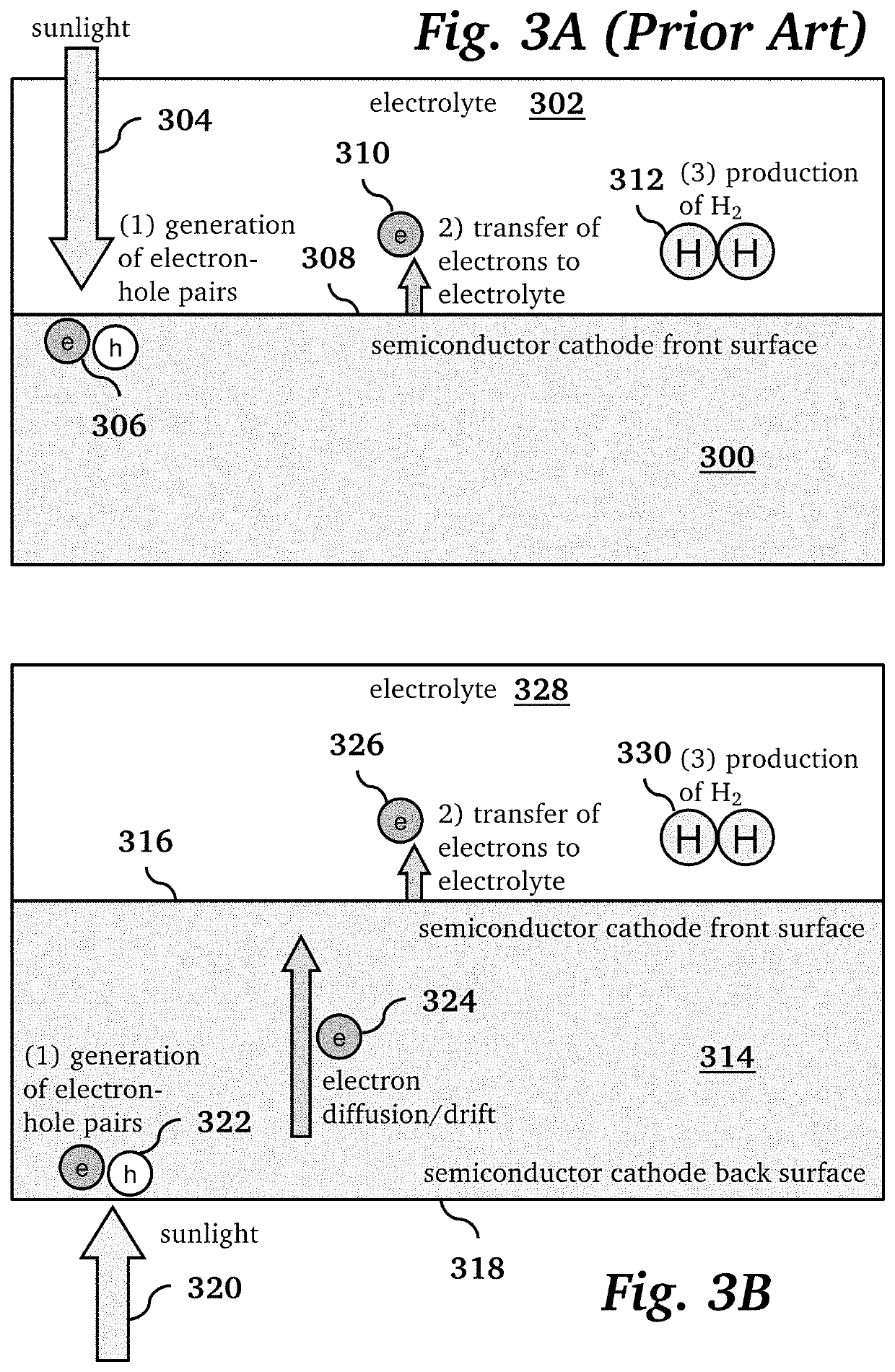Back-illuminated photoelectrochemical cell
- Summary
- Abstract
- Description
- Claims
- Application Information
AI Technical Summary
Benefits of technology
Problems solved by technology
Method used
Image
Examples
Embodiment Construction
[0023]Disclosed herein are systems and methods for photoelectrochemical water splitting that spatially and temporally separates the photoelectric and electrolytic processes in a photoelectrochemical cell with a cathode adapted to be illumined by sunlight from the back surface, i.e., the surface opposite the front surface where hydrogen is formed. Photon flux at the cathode surface is higher in the disclosed photoelectrochemical cell because hydrogen bubbles forming at the front surface do not interfere with the illumination of the back surface. In addition, a solar concentrator can provide increased intensity of the back surface illumination.
[0024]FIG. 2A illustrates a photoelectrochemical cell for solar water splitting using backside illumination, according to an embodiment of the invention. The device has a housing 200 containing an electrolyte 202, a semiconductor cathode 204, a semiconductor anode 206, and an electrically conductive material 208 connecting the cathode and anode....
PUM
 Login to view more
Login to view more Abstract
Description
Claims
Application Information
 Login to view more
Login to view more - R&D Engineer
- R&D Manager
- IP Professional
- Industry Leading Data Capabilities
- Powerful AI technology
- Patent DNA Extraction
Browse by: Latest US Patents, China's latest patents, Technical Efficacy Thesaurus, Application Domain, Technology Topic.
© 2024 PatSnap. All rights reserved.Legal|Privacy policy|Modern Slavery Act Transparency Statement|Sitemap



